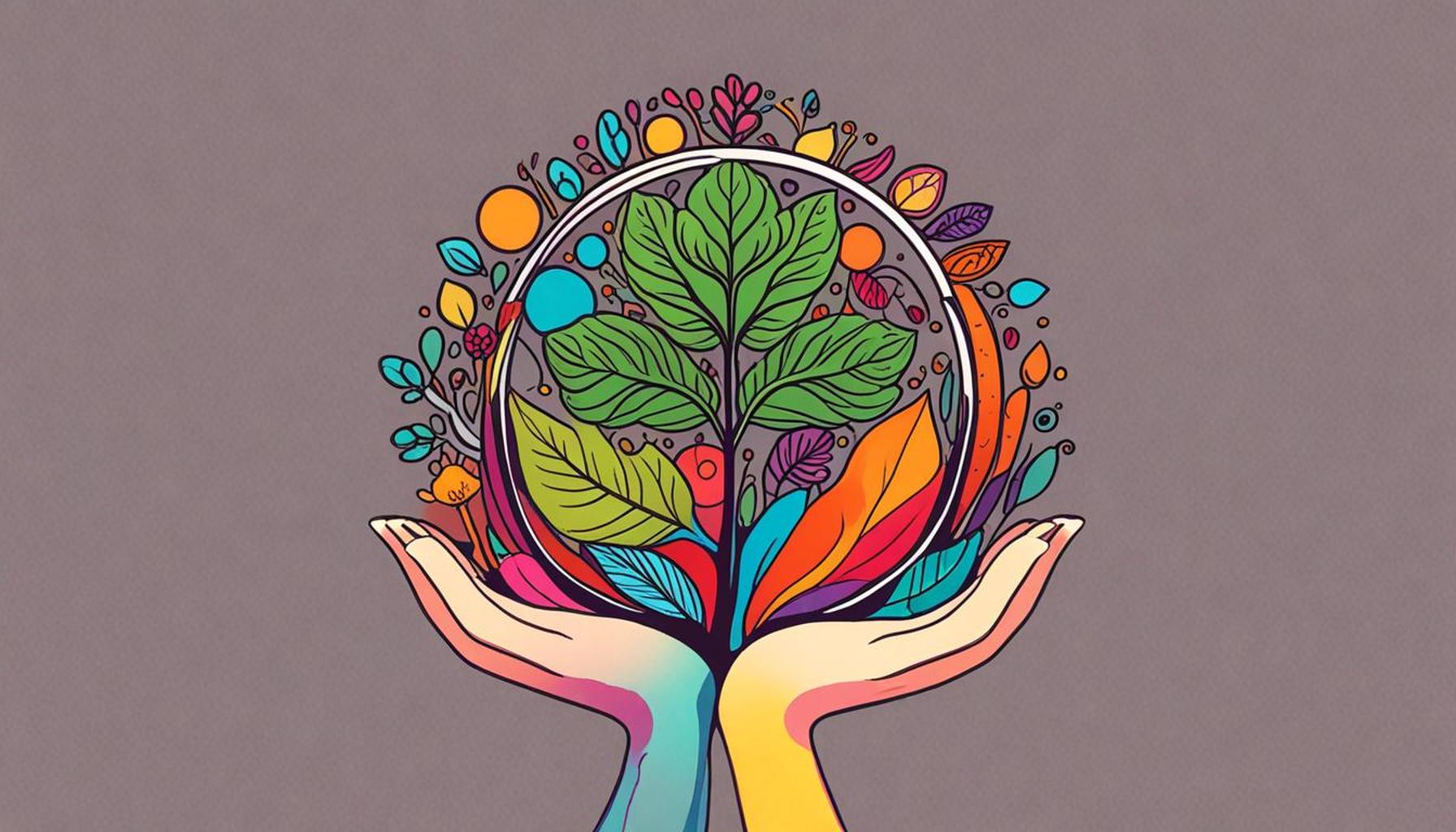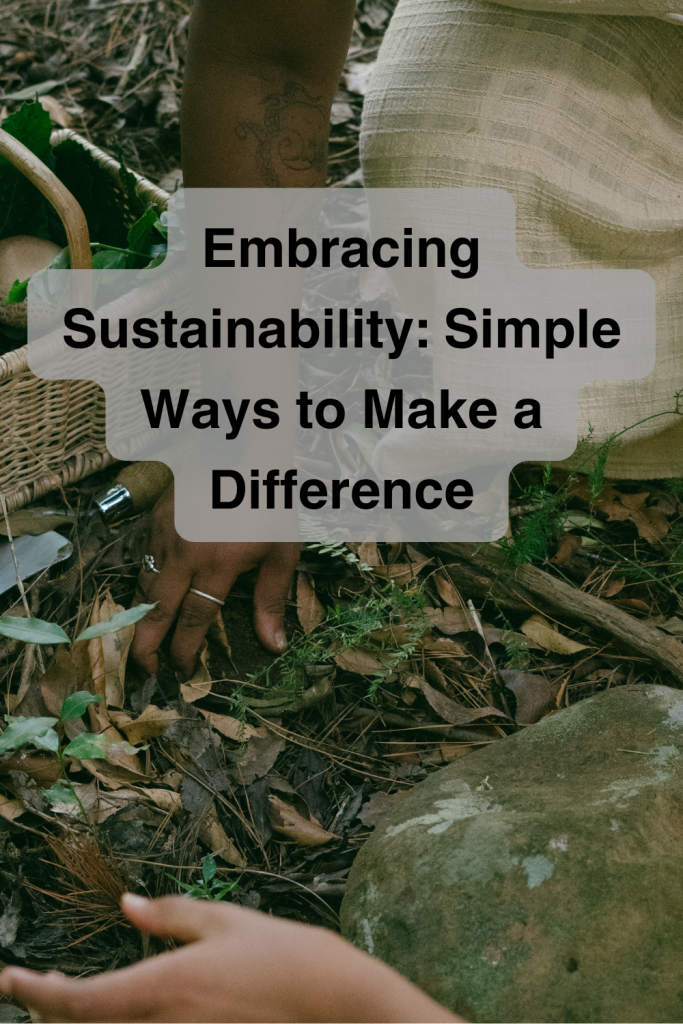Mindful Living and Sustainability: Creating Conscious Consumption in a Minimalist Lifestyle

The Importance of Mindful Living in a Busy World
In today’s fast-paced world, the need for a more intentional way of living is becoming increasingly essential. Mindful living embraces the idea of being present in each moment while consciously making choices that align with our values. By integrating sustainability into our daily habits, we can pave the way toward not only personal well-being but also a healthier planet.
Understanding Mindful Living and Sustainability
What does this look like in practice? The journey toward mindful living involves several key concepts that foster a deeper connection with ourselves and our environment. Below are essential elements to consider:
- Conscious Consumption: This involves being aware of the products we buy, understanding their origins and how they impact the environment. For example, brands that prioritize ethical sourcing may have a lower carbon footprint compared to mass-produced items. By choosing brands that align with our values, we contribute to a more sustainable economy.
- Minimalism: Minimalism extends beyond just decluttering; it’s about owning only what you truly need and love. By reducing excess and focusing on quality over quantity, we create a simplified lifestyle that not only reduces stress but also lessens our environmental impact.
- Eco-Friendly Products: Choosing sustainable or biodegradable products is crucial. For instance, opting for reusable bags, bamboo toothbrushes, and glass containers can lessen waste significantly. Brands like Grove Collaborative or Package Free Shop offer a range of eco-conscious items to help consumers transition smoothly.
- Mindful Eating: Engaging in mindful eating encourages us to consume locally sourced and organic foods, which often have less environmental impact. Farmers’ markets are an excellent way to support local agriculture while enjoying fresh produce.
- Community Engagement: Supporting local artisans and sustainable practices strengthens community ties and promotes regional economies. Participating in events like local clean-up days or workshops fosters a sense of belonging and collective responsibility toward our environment.
The Connection Between Mindfulness and Sustainability
As more individuals across the United States adopt a minimalist lifestyle, the conversation about sustainability becomes critical. Recent surveys indicate that over 70% of Americans express a desire to lead more environmentally friendly lives. The connection between mindful living and sustainability is rich and multi-faceted, encouraging us to reflect on our habits and the broader impact they have on the world.
This article will outline practical ways to create conscious consumption habits within a minimalist framework, guiding readers toward a more purposeful way of living. The goal is to inspire individuals to examine their daily decisions, fostering deeper connections with both themselves and the world around them. Join us as we delve into practical tips and inspiring insights to cultivate a lifestyle that values both self and planet, setting the stage for a brighter, more sustainable future.
DIVE DEEPER: Click here to discover how minimalism can revolutionize your space

Practical Steps Toward Mindful and Sustainable Living
Transitioning to a lifestyle that embraces mindful living and sustainability does not have to be overwhelming. In fact, it can be a profoundly rewarding journey that leads to personal fulfillment and a positive impact on the planet. Below are practical steps that anyone can take to create a more conscious and sustainable lifestyle:
- Assess Your Consumption Habits: Start by evaluating what you currently purchase and consume. Keep a journal for a week to track your spending habits and the items you acquire. This reflective practice can help identify unnecessary purchases and highlight areas where changes can be made.
- Set Clear Intentions: Once you have a clear understanding of your consumption habits, establish intentions for your minimalist lifestyle. Consider what is truly important to you. This could range from supporting local businesses to reducing your carbon footprint. Setting intentions allows you to align your actions with your values.
- Implement a 30-Day Challenge: To jumpstart your commitment to minimalism and sustainability, consider a 30-day challenge. For example, commit to purchasing only what you absolutely need for a month, or try eliminating single-use plastics. Documenting this journey can deepen your understanding of what you genuinely require.
- Prioritize Quality Over Quantity: As you begin to replace items in your home, choose durable and sustainable products that are ethically sourced. This often means investing in less but better. For instance, investing in high-quality clothing made from organic materials can reduce waste and offer longevity.
- Engage in Local Sustainability Efforts: Stay connected to your community by participating in sustainability-minded events. Look for local farmers’ markets, community gardens, or recycling initiatives. Not only does this support local economies, but it fosters a sense of belonging and shared purpose in sustainable living.
In addition to these steps, embracing a mindful approach to consumerism also involves understanding the environmental implications of our choices. Consider the lifecycle of products—from extraction of raw materials to manufacturing and eventual disposal. The more we educate ourselves about these systems, the more empowered we become to make choices that are both personally fulfilling and planet-friendly.
The cumulative effect of even small changes can lead to significant improvements over time. As an example, if each person in the United States made a habit of choosing just one sustainable product over a conventional one each week, the impact would ripple across communities and industries, leading to a substantial positive change.
Mindful living combined with sustainable practices allows us to not only focus on our personal well-being but also to extend that care to the planet. In this way, conscious consumption becomes not just a personal mission but a collective endeavor, encouraging a culture of responsibility and stewardship toward our shared environment.
| Advantage | Description |
|---|---|
| Reduces Waste | By prioritizing minimalism, individuals significantly reduce consumption, leading to less waste in landfills and a smaller ecological footprint. |
| Enhances Quality of Life | Embracing a mindful lifestyle fosters a sense of peace and fulfillment, as focus shifts from excess to appreciating what one has. |
| Promotes Conscious Consumption | Mindfulness encourages individuals to make thoughtful purchases, selecting products that align with their values and sustainability goals. |
| Community Connection | Adopting sustainability practices often leads to stronger community ties, as people engage in local solutions and support eco-friendly initiatives. |
Mindful living encourages individuals not only to simplify their possessions but also to reevaluate their relationships with consumption and environmental impact. The transformation towards conscious consumption does not stop at personal benefits; it ripples through communities, creating a culture of sustainability that can influence broader societal changes. By taking small steps towards reducing waste and enhancing quality of life, adherents to this lifestyle can pave the way for a more sustainable future that prioritizes well-being and environmental stewardship. Embracing these practices helps build a foundation for responsible consumerism, enabling individuals to make choices that align with their values while enjoying a fulfilling minimalist lifestyle.
DISCOVER MORE: Click here to learn digital decluttering techniques
Embracing Conscious Choices in Daily Life
Living mindfully and sustainably demands conscious effort and a willingness to embrace change. While the steps outlined previously provide a solid foundation, there are additional ways to integrate mindful consumption into your everyday routines. By adopting intentional practices, you can contribute to the larger movement toward sustainability while simplifying your life.
- Reduce Food Waste: In the United States alone, about 30-40% of the food supply is wasted, according to the USDA. Start by planning meals ahead of time and creating shopping lists based on what you actually need. Additionally, consider composting organic waste, which enriches the soil while reducing landfill contributions. Many communities offer composting programs or educational workshops to help get you started.
- Embrace the Secondhand Economy: Thrift shopping not only gives secondhand items a new life but also reduces the demand for newly manufactured goods. Look for local thrift stores, online marketplaces, or community exchange groups where you can buy or trade items you no longer need. The act of reusing provides a unique charm to your belongings and showcases your distinctive style.
- Learn to Repair: In a throwaway culture, mastering the skill of repairing items rather than discarding them can make a significant difference. Familiarize yourself with basic mending techniques for clothing or appliance fixes. YouTube offers an abundance of tutorials that can turn small repair projects into satisfying experiences. The added longevity of your possessions results in less waste over time.
- Mindful Energy Consumption: Being mindful of energy use in your home is another way to contribute to sustainability. Invest in energy-efficient appliances and consider smart home technology to monitor consumption. Small actions, such as turning off lights when leaving a room or using public transportation, can save energy and reduce your carbon footprint.
- Support Sustainable Brands: When shopping, seek out brands that practice transparency regarding their supply chain and ethical sourcing. Many companies are striving for sustainability through responsible sourcing, eco-friendly materials, and fair labor practices. Research brands to understand their commitment to sustainability and make informed choices that align with your values.
Moreover, the relationship between mindfulness and consumerism extends to how we experience the world around us. When engaging with products, ask yourself how they align with your values and lifestyle. Consider the emotional attachment to objects and how they reflect your identity. This self-reflection can lead to better choices and helps in eliminating impulse buys driven by fleeting desires rather than lasting fulfillment.
Another interesting aspect of mindful living is the growing trend of digital minimalism. As technology plays an increasing role in our lives, adopting a minimalist approach to digital consumption becomes essential. This wide-reaching topic includes decluttering your digital space, such as unsubscribing from unnecessary emails and managing social media accounts mindfully. By streamlining your digital life, you can reduce information overload while increasing your capacity for focus and intentional living.
While the journey toward mindful living and sustainability requires ongoing attention and adjustment, the rewards are immense. By fostering a lifestyle centered around conscious consumption, you not only contribute positively to the environment but also create a life rich in purpose and meaning.
DISCOVER MORE: Click here for minimalist organization tips
Conclusion: The Path to Mindful Living and Sustainable Choices
In a world increasingly driven by consumerism, embracing mindful living and sustainability is not just a trend, but a transformative lifestyle choice. By focusing on conscious consumption and a minimalist lifestyle, individuals can take significant strides towards reducing their environmental impact while enhancing their personal well-being.
The key lies in making deliberate, informed choices. From reducing food waste to engaging with the secondhand economy, every action counts. By repairing items rather than discarding them and opting for energy-efficient solutions, you’re not only furthering sustainability but also cultivating a sense of personal empowerment and responsibility. Furthermore, by supporting sustainable brands and engaging in self-reflection about your consumption patterns, you can align your purchases with your core values, leading to more fulfilling experiences.
Moreover, the concept of digital minimalism underscores the importance of simplicity and balance in our increasingly digital lives. By decluttering your digital spaces, you create mental clarity and focus, essential components of mindful living. This holistic approach revolves around understanding the interconnectedness of your actions and their impact on the planet.
Ultimately, the journey toward mindful living and sustainability is ongoing, requiring persistent effort and commitment. However, the rewards extend far beyond personal gains—each conscious choice contributes to a larger movement toward environmental stewardship and social responsibility. As we refine our consumption habits, we enrich our lives with purpose and intention, echoing the call for a more sustainable future.


